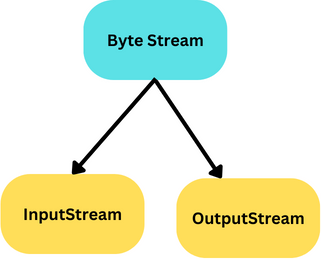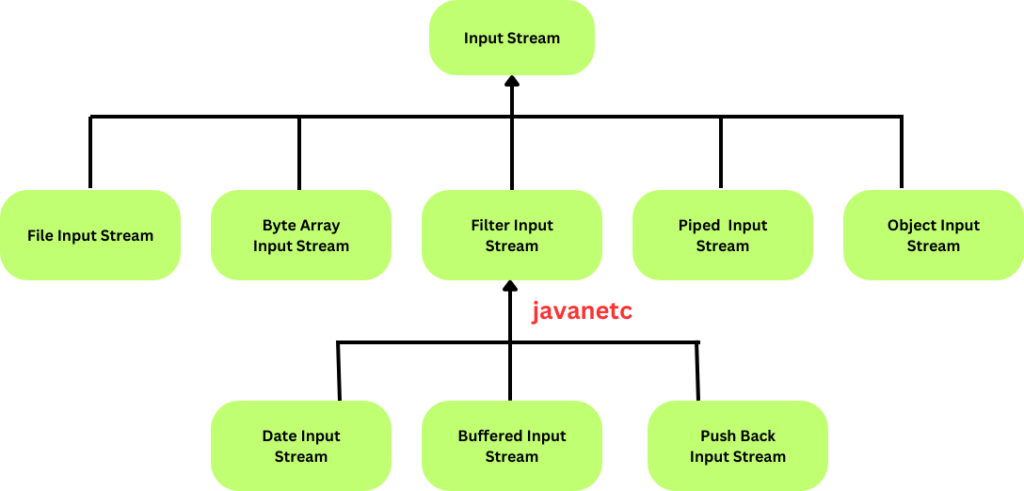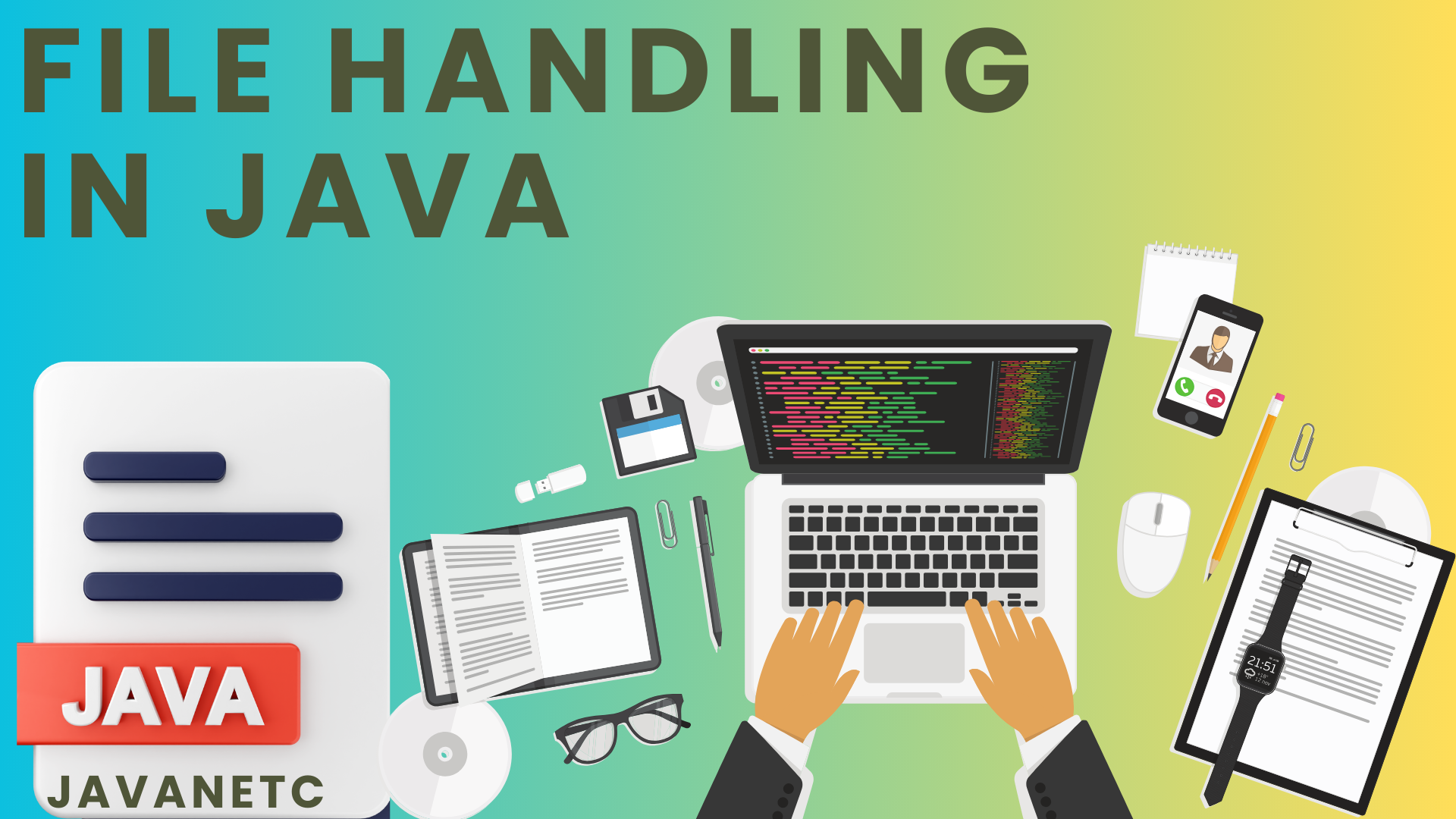Introduction:
File handling in Java is a crucial aspect of any programming language, and Java is no exception. In this comprehensive guide, we will delve into the intricate world of file handling in Java, exploring the concept of streams, the different types of streams (Byte and Character), the essential methods provided by the Java File Class, and a brief overview of handling directories.
Table of File Handling in Java
What is File Handling in Java:
File Handling in Java is the process of manipulating files and directories stored on the computer’s file system. It involves reading from and writing to files, creating and deleting files, and managing directories.
Concept of Streams in Java:
Streams play a pivotal role in Java File Handling. They act as channels through which data can be transferred between a program and a file. There are two types of streams in Java: Byte Streams and Character Streams.
Byte Streams:
Byte streams are used for handling binary data. They are suitable for all kinds of files, including images, audio, and executable files. InputStream and OutputStream are the two main classes for byte streams.

InputStream and OutputStream are superclasses that have a set of concrete classes that handle various devices such as disk files, network connections, etc.

FileInputStream:
The FileInputStream class is a cornerstone of Byte Streams, designed for reading raw bytes from a file. It extends the functionality of the generic InputStream class to cater specifically to byte-oriented data. Here’s a basic example:

try (FileInputStream fis = new FileInputStream("example.bin")) {
int byteRead;
while ((byteRead = fis.read()) != -1) {
// Process the byte read
}
} catch (IOException e) {
e.printStackTrace();
}
In this example, FileInputStream is used to read bytes from the file “example.bin” until the end of the file is reached (read() returns -1).
FileOutputStream:
On the flip side, FileOutputStream is the counterpart for writing raw bytes to a file. It extends the OutputStream class, providing methods for efficient byte-oriented output operations:

try (FileOutputStream fos = new FileOutputStream("output.bin")) {
byte[] data = {65, 66, 67, 68}; // Example byte array
fos.write(data);
} catch (IOException e) {
e.printStackTrace();
}
Here, FileOutputStream is used to write the byte array {65, 66, 67, 68} to the file “output.bin.”
Character Streams:
Character streams are specifically designed for handling character data. They are ideal for text files, providing better performance and ease of use when dealing with character-based data. Reader and Writer are the primary classes for character streams.
FileReader:
The FileReader class is at the core of Character Streams, facilitating the reading of characters from a file. It extends the Reader class, making it a powerful tool for handling text-based files. Here’s a basic example:
try (FileReader reader = new FileReader("example.txt")) {
int charRead;
while ((charRead = reader.read()) != -1) {
// Process the character read
}
} catch (IOException e) {
e.printStackTrace();
}
In this example, FileReader is employed to read characters from the file “example.txt” until the end of the file is reached.
FileWriter:
On the writing side, FileWriter complements FileReader by providing methods to write characters to a file. It extends the Writer class, ensuring efficient character-oriented output operations:
try (FileWriter writer = new FileWriter("output.txt")) {
String data = "Hello, Character Streams!"; // Example string
writer.write(data);
} catch (IOException e) {
e.printStackTrace();
}
Here, FileWriter is utilized to write the string “Hello, Character Streams!” to the file “output.txt.”
File Handling in Java Class Methods:
The Java File Class provides a set of methods that facilitate various file operations. Let’s explore some essential methods:
Creating a File:
The File class allows you to create a new file using the createNewFile() method. This method returns true if the file is successfully created.
File newFile = new File("example.txt");
if (newFile.createNewFile()) {
System.out.println("File created successfully.");
}
Reading from a File:
Reading from a file can be achieved using FileInputStream for byte-oriented reading or FileReader for character-oriented reading.
FileInputStream fis = new FileInputStream("example.txt");
// Read operations
fis.close();
Writing to a File:
FileOutputStream and FileWriter are used for writing to files. They provide methods for writing bytes or characters to the file.
FileOutputStream fos = new FileOutputStream("example.txt");
// Write operations
fos.close();
Deleting a File:
The delete() method in the File class is used to delete a file.
File fileToDelete = new File("example.txt");
if (fileToDelete.delete()) {
System.out.println("File deleted successfully.");
}
Java Directories:
In addition to handling individual files, Java also supports operations on directories. The File class in Java provides methods for creating directories, listing files in a directory, and checking if a path represents a directory.
Creating a Directory:
File newDirectory = new File("NewDirectory");
if (newDirectory.mkdir()) {
System.out.println("Directory created successfully.");
}
Listing Files in a Directory:
File directory = new File("ExistingDirectory");
File[] files = directory.listFiles();
for (File file : files) {
System.out.println(file.getName());
}
Difference Box: Byte Streams and Character Streams
| Aspect | Byte Streams | Character Streams |
|---|---|---|
| Purpose | Reading and writing raw binary data | Reading and writing textual data |
| Data Type | Operates on raw bytes | Operates on characters |
| Suitability | Ideal for handling all types of files (e.g., images, audio) | Specifically designed for text-based files |
| Classes | FileInputStream, FileOutputStream | FileReader, FileWriter |
| Example Usage | Reading and writing binary data (e.g., images) | Reading and writing text files |
| Character Encoding | Not concerned with character encoding | Handles character encoding automatically |
| Methods | read(), read(byte[] b), write(int b), write(byte[] b) | read(), read(char[] cbuf), write(int c), write(String str) |
| Efficiency | Efficient for binary data and non-textual information | Efficient for text-based data and character-oriented operations |
| Portability | May be affected by system-specific byte order | Portable across different platforms due to automatic character encoding |
| Examples | Reading images, audio files | Reading and writing text files, processing configuration files |
Conclusion:
In conclusion, mastering file handling in Java is essential for efficient data management in your applications. Understanding the concept of streams, choosing the right stream type, and leveraging the powerful methods provided by the Java File Class can greatly enhance your file handling in Java capabilities.
Whether you’re creating, reading, or deleting files, or managing directories, Java provides a robust set of tools to handle these operations seamlessly. As you delve into file handling in Java, always consider the type of data you’re working with and choose the appropriate stream accordingly.
By incorporating these best practices into your file handling in Java repertoire, you’ll be well-equipped to build robust and efficient applications that effectively manage and manipulate files and directories. Happy coding!



